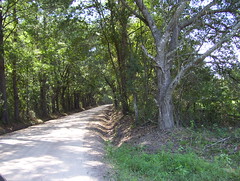 Beta New Urban Network reported 1 September 2006 that
Research: trees make streets safer, not deadlier:
Beta New Urban Network reported 1 September 2006 that
Research: trees make streets safer, not deadlier:
Proposals for planting rows of trees along the roads — a traditional technique for shaping pleasing public spaces — are often opposed by transportation engineers, who contend that a wide travel corridor, free of obstacles, is needed to protect the lives of errant motorists.The study asks a key question: Continue readingIncreasingly, however, the engineers’ beliefs about safety are being subjected to empirical study and are being found incorrect. Eric Dumbaugh, an assistant professor of transportation at Texas A&M, threw down the gauntlet with a long, carefully argued article, ”Safe Streets, Livable Streets,” in the Summer 2005 issue of the Journal of the American Planning Association. A follow-up article by Dumbaugh, in the 2006 edition of Transportation Research Record, will present further evidence that safe urban roadsides are not what the traffic-engineering establishment thinks they are.
Though engineers generally assert that wide clear areas safeguard motorists who run off the roads, Dumbaugh looked at accident records and found that, on the contrary, wide-open corridors encourage motorists to speed, bringing on more crashes. By contrast, tree-lined roadways cause motorists to slow down and drive more carefully, Dumbaugh says.
Dumbaugh examined crash statistics and found that tree-lined streets experience fewer accidents than do “forgiving roadsides” — those that have been kept free of large, inflexible objects. He points to “a growing body of evidence suggesting that the inclusion of trees and other streetscape features in the roadside environment may actually reduce crashes and injuries on urban roadways.”







